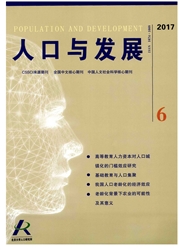

 中文摘要:
中文摘要:
采用分形、ESDA、重心转移及GWR等空间分析手段和方法,研究了2000年以来甘肃省人口城镇化的空间演化过程及其影响因素。结果表明:中低城镇化水平县区和低城镇化水平县区所占比重较大,占甘肃省县区总数的72.41%,低城镇化水平的县区数量在持续减少;甘肃省城镇人口规模分布较为分散且分布不均;10年间,甘肃省人口城镇化率重心向南偏移,并且在空间上凸显出“两大高水平集聚区”;经济及产业结构因素和教育文化程度因素会促进人口城镇化率的提高,民族因素问题会导致城镇化率增长速度减慢。
 英文摘要:
英文摘要:
Based on the demographic data of Gansu province in 2000,2005 and 2010, the article researches the spatial evolution process and the factors of population urbanization in Gansu province by using the methods of fractal characteristic, ESDA, Gravity center migration, GWR and so on since 2000. The results show that : the distribution of urban population size in Gansu province is dispersion and uneven distribution. On the whole, the counties of medium and low level of urbanization in Gansu province account for a larger proportion ,taking up 72.41% of all counties in Gansu province. The counties of high level of urbanization account for a very small proportion. The Gravity center of the 'population' s urbanization rate in Gansu province shifts gradually to the southern between 2000 and 2010. On the space ,the rate of population urbaniza- tion highlights the "two high level cluster areas". The factors of economic and industrial struc- ture and the education level can improve the rate of population urbanization, while national fac- tors can bring the opposite effect on the improvement of urbanization rate.
 同期刊论文项目
同期刊论文项目
 同项目期刊论文
同项目期刊论文
 期刊信息
期刊信息
